Islamic Art
1/15
There's no tags or description
Looks like no tags are added yet.
Name | Mastery | Learn | Test | Matching | Spaced |
|---|
No study sessions yet.
16 Terms
Umayyads
661-750 CE
Abassids
750-1258 CE
Nasrids
1232-1492
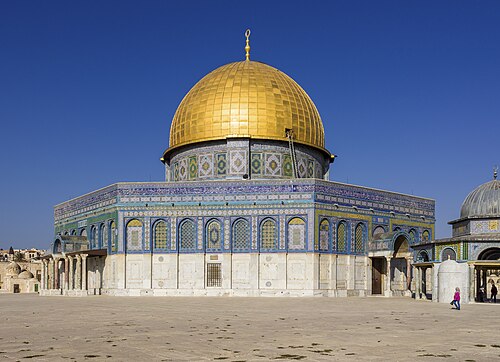
Dome of the Rock Jerusalem, Umayyads, 691-692
-Earlies Muslim religious structure
-Earliest Muslim epigraphy
-Important ancient site.
-Not a mosque.
-It is only the dome not the whole building.
-Built in a christian/byzantine city after they conqoured it. → Asserting their religions dominance over christianity.
-Islam as the superior of the abrahamic religions.

Facade of the Mshatta Palace, Umayyad, Present day Jordan

Mihrab from Isfahan, Iran, 1352-55
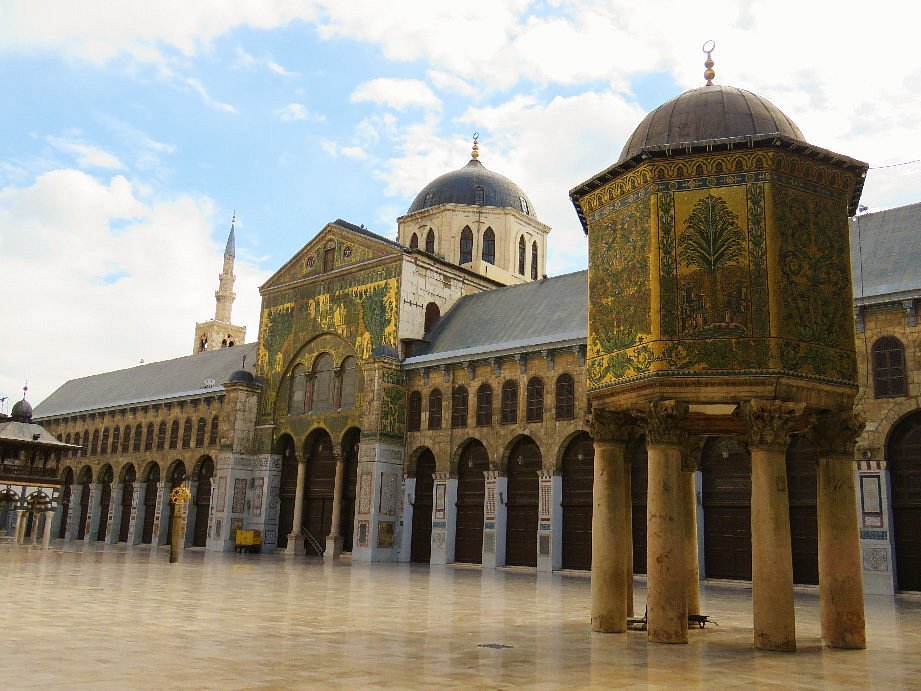
Great Mosque of Damascus, Syria, c. 715, Umayyads
-Damascus Umayyad capital.
-Built on a site important to many religions as places of worship → To assert dominance over other abrahmic religions
-Built through SPOILA: When you take parts of an old building to build a new one.
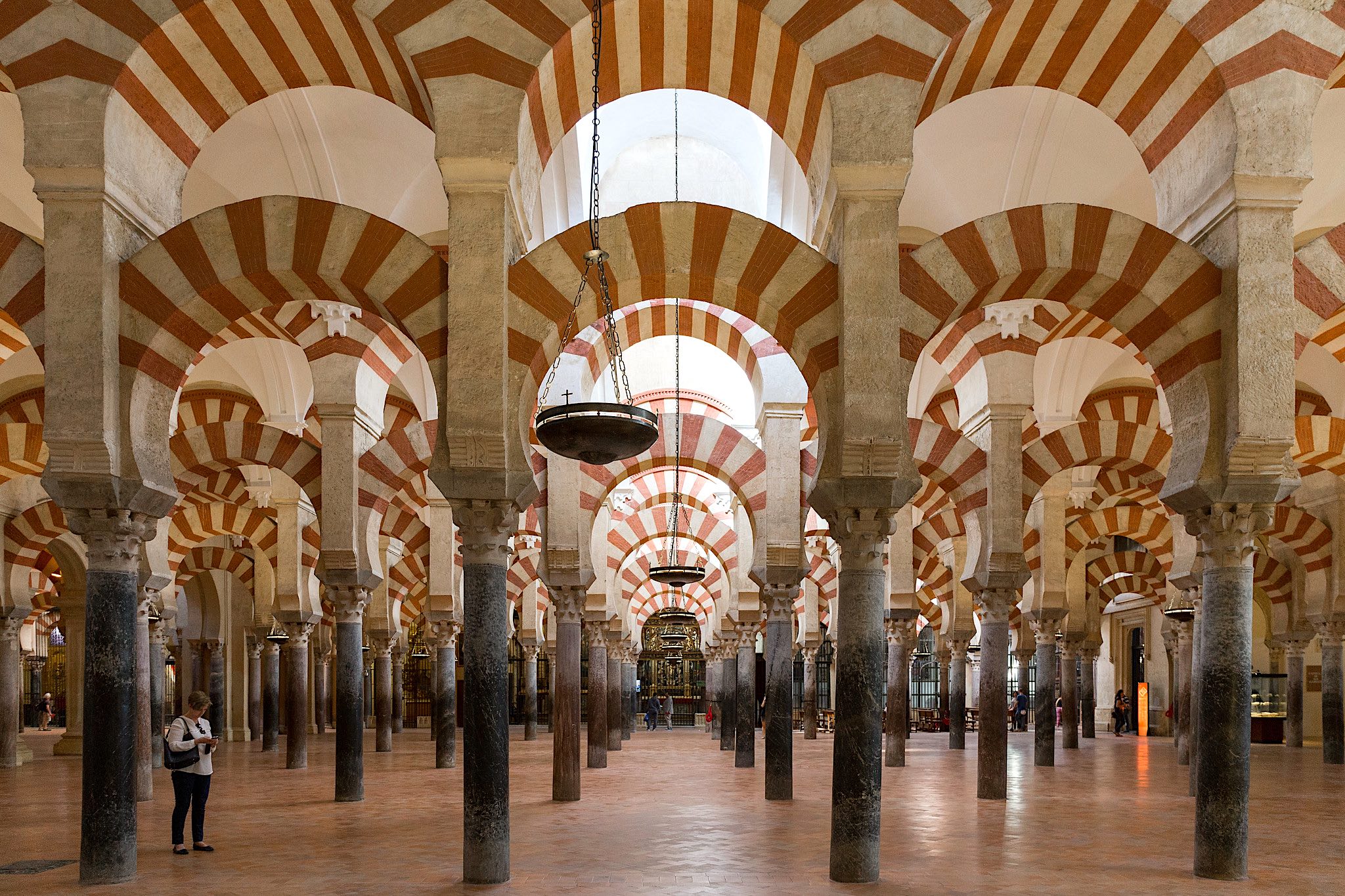
Great Mosque at Cordoba, Umayyads, 661-750 ce
-Hypostyle Hall: Big hall with a lot of columns, architecture with stripped stones that created illustion of distance or expansion.
Stripped stones also helped with structural integrity during earthquakes.
-Built on site of former religious sites, so has aspects of other religions.
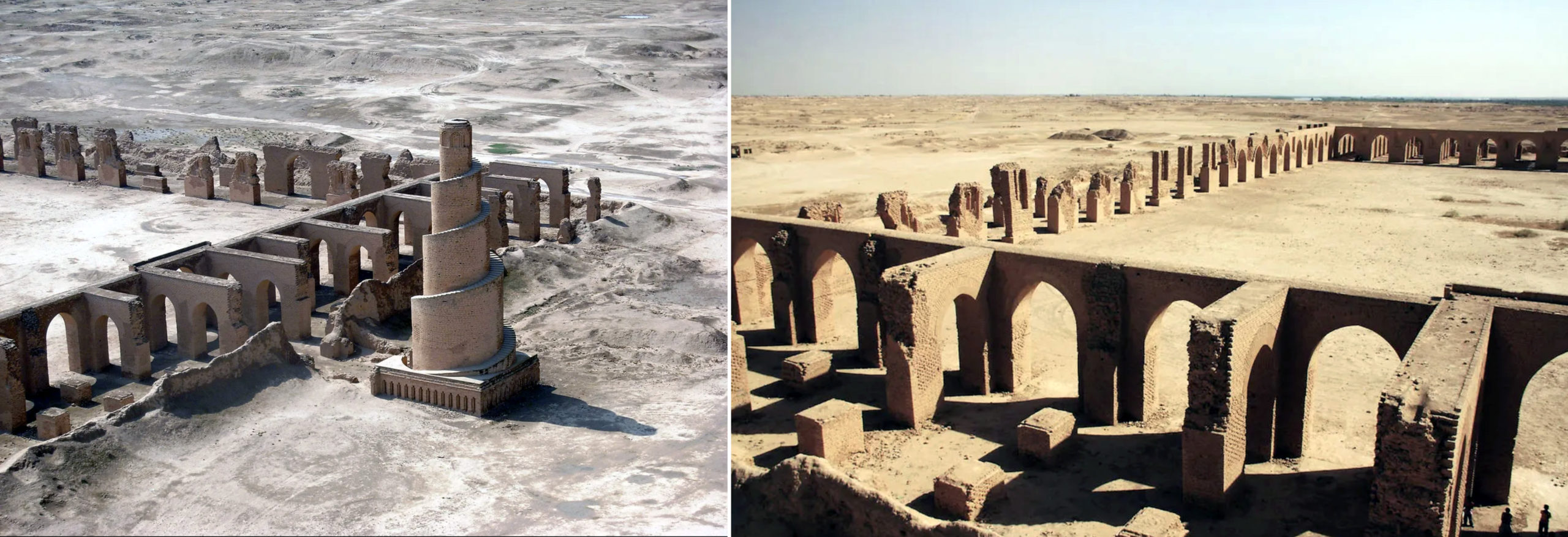
Great Mosque at Samarra, Iraq, Abbasid, 842-52 CE
-Built out of mud and brick
-Tower assumed to be minavett, but challenged recently because the structure is built in an area where a call to prayer could not be heard from the tower.
-Influenced the Tower of Babel.
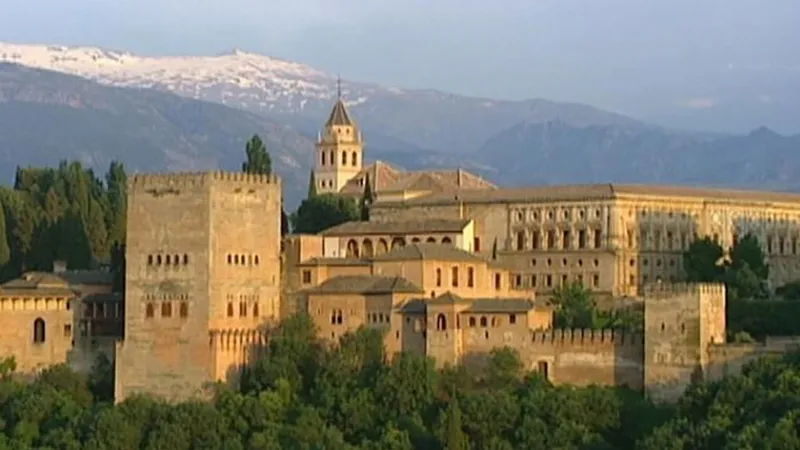
The Alhambra Palace of the Nasrids, Granada Spain, Nasarids, c. 1238-1391,
-A complex of palaces with royals, servants alike living together.
-Has a citadel the imperial family can escape to.
-Use of water: decorative and architercture, creative use that blends in
Water has cooling properties → Water elements used as AC.
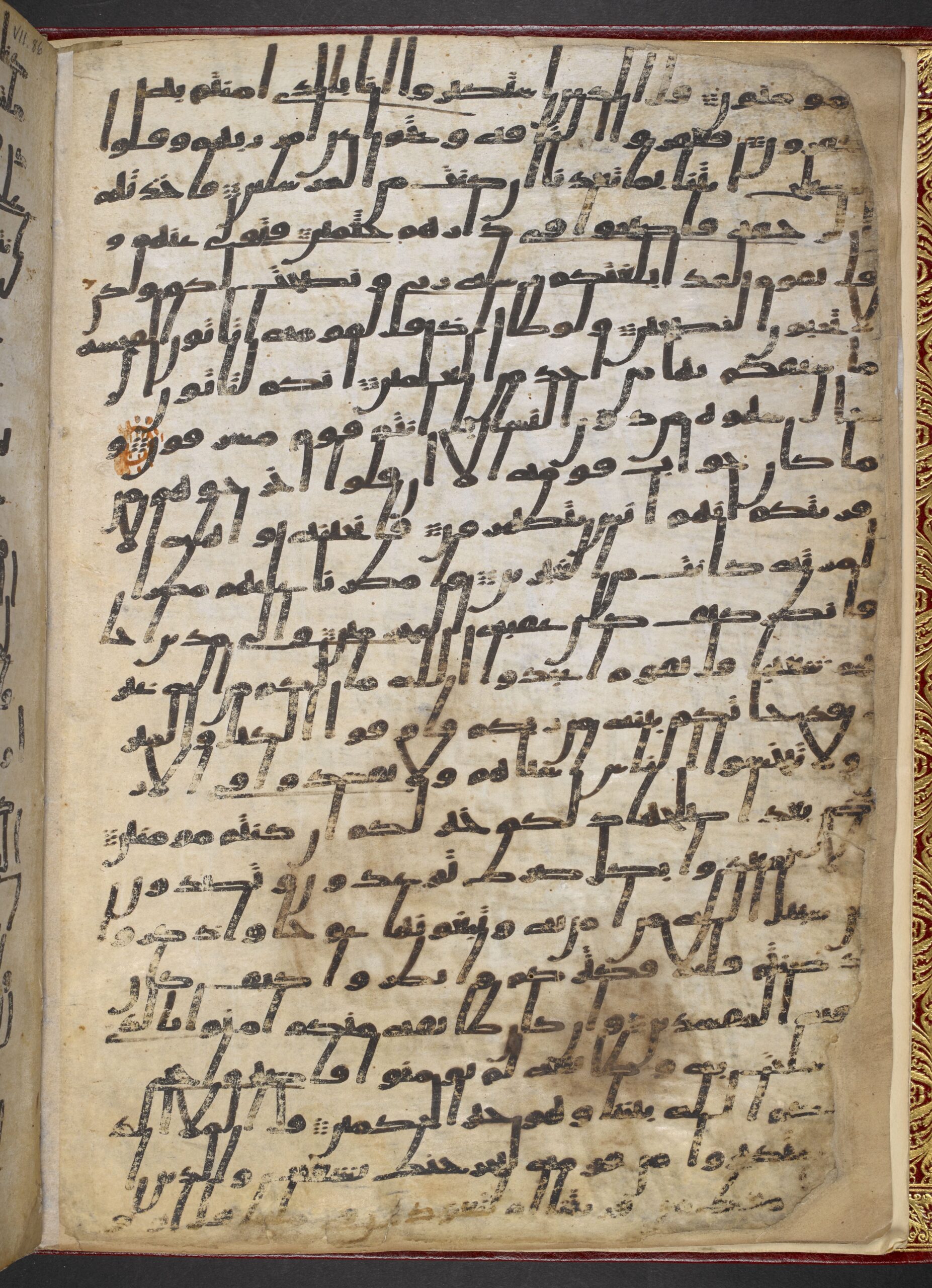
Folio from a Qur’an, 8th Century, Saudi Arabia,
-Example of Hijazi Script
-Difficult to differentiate one word from another → Illegibility means more focused on decoration than telling the story.
-Qur’an as the scripture of islam has been memorized and passed down until muhammeds death, some of the story is missing.
-Long oral tradition at the time, would have been used as a script for someone to read aloud, already know and memorized the story, just needs small reminders.

Folio from a Qur’an Before 911 CE, Iraq
-Example of Kufic script
-Fewer lines, less space taken up on the page →Parchment expensive, this was more of a work of art than a book.
-Emphasis on the horizontal. -Folio illustrates the transition from decorative to legible script in Islamic manuscript tradition, showcasing intricate design and craftsmanship.
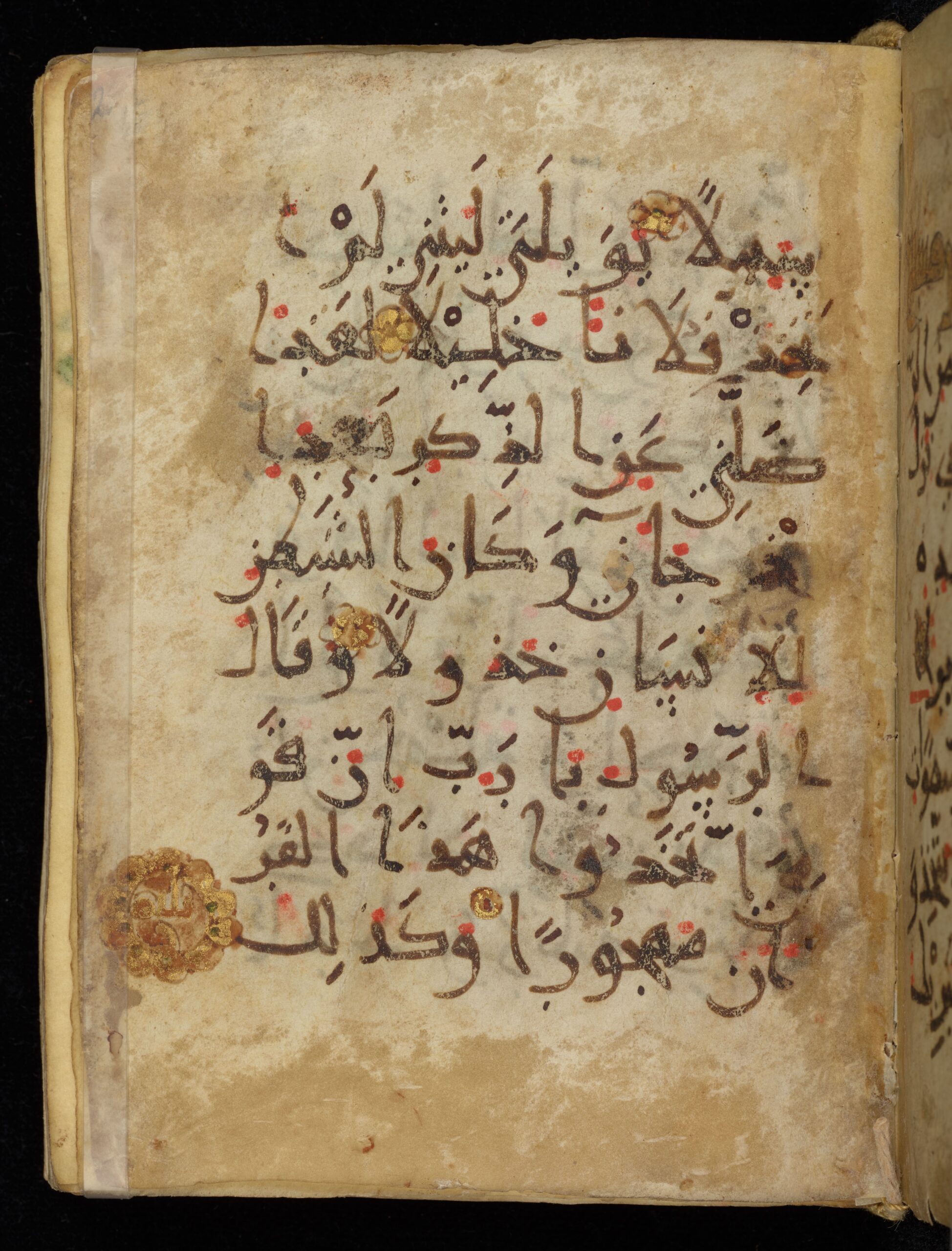
Qur’an in the round script, Late 9th-10th CE, Persia, Iran
-Round script that wasn’t used before, used to write holy script
Shift in who was writing the Qur’ans whoever was doing it knew there way around script easier
-More balanced letters, not stretched or flattened.
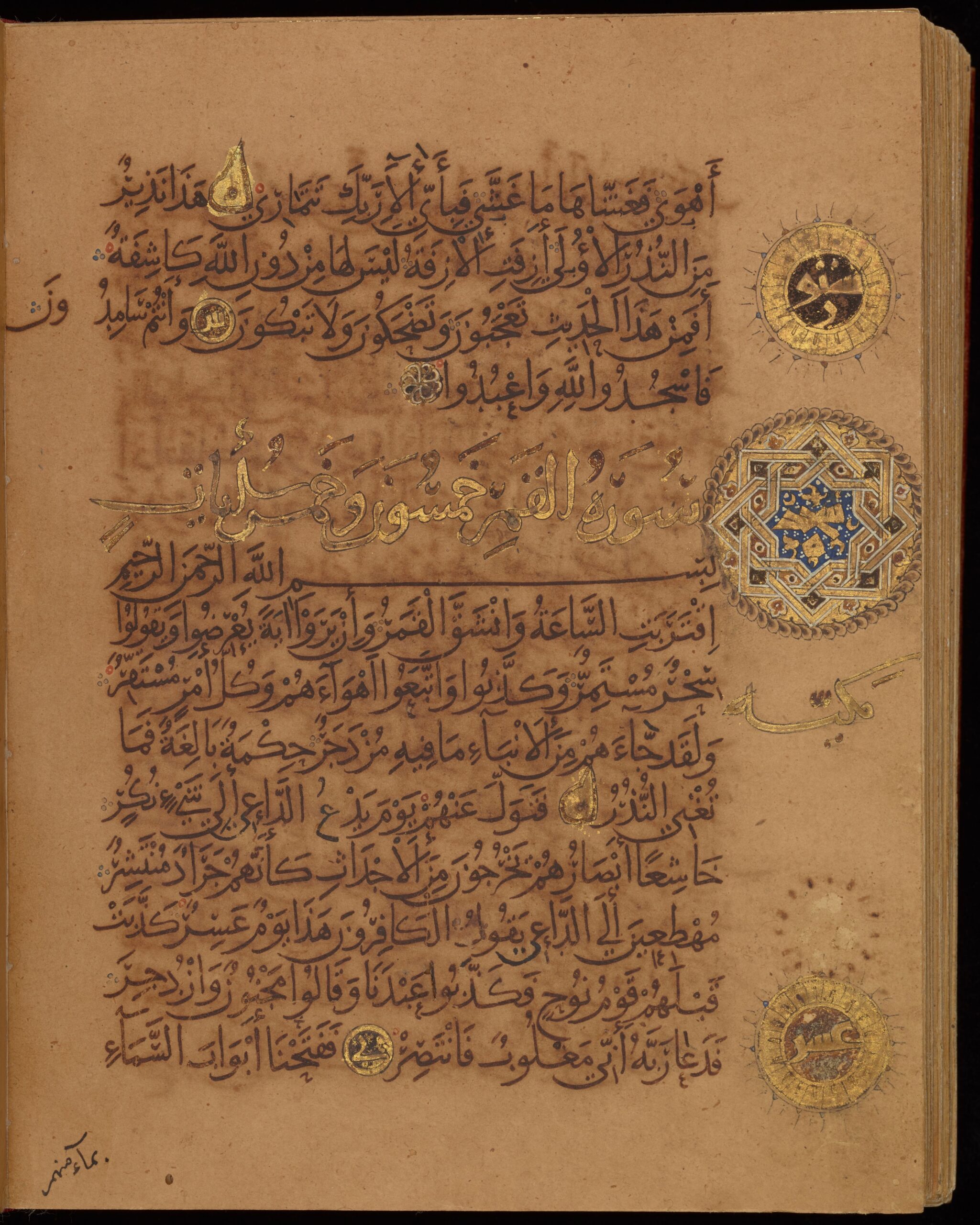
Qur’an by the scribe Ibn al Bawwab, 1000-1001 CE, Iraq
-Making text more legible so more people could read it.
-Muslim popultion multiplied, some people not native arabic speakers, so it wasa easier to read the language when writen like this.
-On paper not parchment

Nurse’s Qur’an 1019-20, Tunisia
-More artful script style that was difficult to read.A unique example of intricate calligraphy with elaborate designs, emphasizing artistry over legibility while still serving as a religious text.

Bowl with inscription, Late 9th Century,
-Inscription on the outside
-Pattern like decorative writing